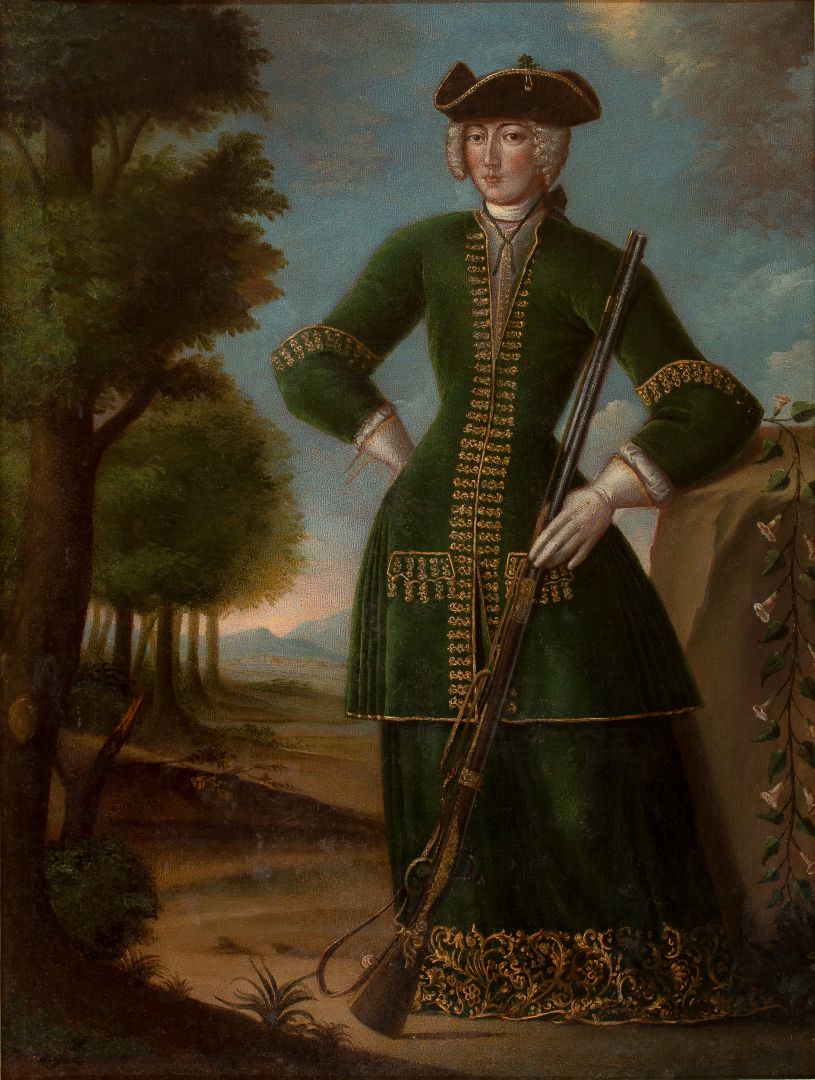Hall 1
Portrait of Countess Katalin Zichy
Unknown artist
Portrait of Countess Katalin Zichy, 18th century
oil on canvas, 91.5x68 cm; unmarked
Fine Arts Collection, Inv. No.: 53.237.1.
Along with the portrait of Ferenc Balassa, the museum also acquired the portrait of Countess Katalin Zichy, (?–1729) for its collection from the Balassa mansion at Ragály. She was the first wife of Balassa Pál (1700–1771), lord lieutenant of Gömör County.
The portrait represents a unique blend of tradition of innovation. Full-length outdoor portraits were known of prior to the 17th century, however those exclusively depict men. In this case, the model is a woman, who, instead of dress with embroidery, lace and ruffed sleeves, is wearing a hunter’s attire. Furthermore, instead of traditional woman’s accessories (mittens, gloves, snuff box, rosary or a fan), the countess is wielding a hunting rifle. This results in a rather masculine appearance, which not only reflects the unique personality and favourite pastime but also the clear and firm instructions of the commissioner. The portrait most likely had a matching pair which depicted her husband in a similar attire and composition. This hypothesis is based on an illustration found in a book from 1902, which depicts the full-length hunting portrait of Pál Balassa. Regrettably, this illustration/reproduction is the only currently known trace of the original painting.
The portrait of Katalin Zichy is also novel in terms of its depiction of nature. The background is more than a scene that hints at the depicted individual through architectural and genre painting motifs. Instead, it is a portrait of the landscape itself which provides a topographic depiction of the environment. This depiction shows a shift in the approach of background for portrait painting and acts as a precursor to later Hungarian landscape painting. Hungarian portrait painting starts to put increased emphasis on the environment from the middle of the 18th century onwards. The portrait of Katalin Zichy was most likely made during her life or shortly after, based on a portrait sketch. The painter was presumably a Hungarian artist, whose work is still very schematic, despite the novel approaches. This portrait represents the initial steps of a process during which the relation between man and the environment becomes more intimate and informal, with the focus shifting away from representative depiction to the characteristics of the model.
Andrea Pirint
